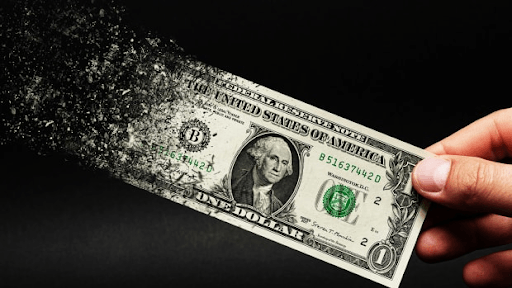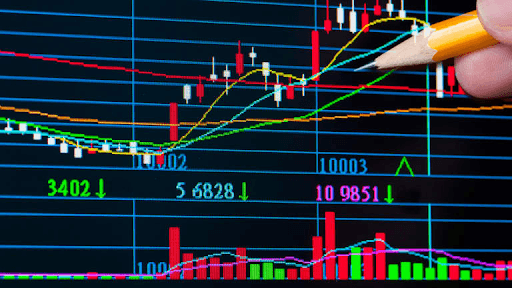Along with every click of the buy and sell button, there is an accompanying reason for that action, realized or not. The range of reasons why we act the way we do are infinite. It could be the results of a playful hamster spinning a wheel or the coincidental moon phase aligning with the stars. The crypto market is no exception to the outlandish methodology employed to predict where price will move next.
To make matters more confusing, any random method that works several times in a row will go viral, while the million other failed strategies die a quiet death. Of all the ways to assess any financial market, ours included, the two most tried and proven methods are fundamental and technical analysis. On occasion, astrology, social listening, or sociopolitical factors will outperform. But in the long run, it is these two methods that offer the safest track record of success, let’s learn what they are.
The Basics
Generally speaking, it takes years to master either of these approaches but within just a few weeks you can begin to find success if you study the right material. Benjamin Graham, Peter Lynch, Warren Buffet, and Carl Icahn are considered some of the greatest fundamental investors to ever live. A lot of their work exists today in books, movies, and documentaries, you can even invest alongside these men if you take the time to learn their approaches.
On the technical analysis side, the greats include Charles Dow, William P. Hamilton, Robert Rhea, and Edson Gould. These men also have their own archive of material for an eager technical analyst to consume. It isn’t uncommon to hear about individuals, hedge funds, or random strategies outperforming these men in the short-term. But in the long-term, these men have a lifetime of success outperforming the market. That’s why they are considered the greats.
Fundamental Analysis
I should make an important distinction between the work of the fundamental analysts above and the proper techniques to conduct your own fundamental analysis of cryptocurrency. The men mentioned above would likely suggest you learn to read quarterly reports, conduct P:E ratios, and study balance sheets. The approach is about finding the intrinsic value, but the methodology does equally apply across crypto markets.

All fundamental analysts are concerned with determining a fair market value for the price of an asset to then determine if it is overvalued or undervalued. In crypto, this translates to an investor…
- reading the white paper
- studying the founders
- participating in the community
- learning the history
- considering economic, political, and social factors current influence on the asset.
With fundamental analysis, make it your goal to thoroughly to explain the problem your coin is solving to an uninformed listener. If you can do this with repeated success, you are on the right track.
Application
Let’s do some fundamental analysis on Bitcoin as a demonstration of what the process looks like. Many people will actually argue the white paper is a bad starting point because it is complicated. I recommend reading through it until it becomes too difficult to understand. Computer science and math-minded thinkers will find the white paper to be extremely thorough and effective at explaining the asset. From the white paper, a number of topics should arise for a newcomer to explore. Words like “blockchain,” “proof-of-work,” double-spend,” should stand out to you. Exploring these at some point will be worth your time.
From here, it would be good to slowly begin working through the timeline and historical development of Bitcoin. The original Satoshi mailing list is an incredible original source to read through that breaks down the white paper.
As your foundation grows, immerse yourself on Twitter amongst Bitcoin proponents, advocates, and maximalists. Maximalists are some of the smartest proponents, but don’t get too caught up in a limited point of view. Since Bitcoin is the most established asset, you have the luxury of going to your local library and probably finding a book about it.
Ethereum is the only other asset with physical literature. The other +9,999 coins don’t offer this luxury, so I suggest you take advantage of it. Beyond this, join active Telegram and Discord groups and subscribe to YouTube channels that cater to your interest. Good fundamental analysis is everywhere, along with bad analysis. Just be extra careful and critical early on, this is when you are most susceptible to bad information.
Technical Analysis
On the flip side of fundamental analysis is technical analysis. It analyzes patterns in market data and price to identify trends, make predictions, and ultimately trade positions. Technical analysis employs a wide range of approaches to make sense of price action, starting from your most basic concepts of support and resistance lines to the more complicated techniques such as Ichimoku, Wyckoff Accumulation, and TD Sequential. But how can there be so many different metrics and methods to assess just one asset? And how could past price action give us any clue on future price action? Let’s get to the bottom of what technical analysis really is.
Far too many traders view technical analysis as a predictor of future events. They believe that they can see what is going to happen based on a few lines and candles on a chart. If this was the case, all technical analysts would agree on every chart pattern and all traders would be extremely wealthy with a strike rate of 100%. In reality, you can show a chart to 100 traders and get 100 different interpretations of where the price is headed. In that regard, it is a pseudoscience at best, and you should be wary of any trader who speaks in absolutes about what is going to happen. They’re trying to sell you something or are emotionally attached to their idea.
Charts
A chart is merely an illustration of the emotions of the markets participants. Are they fearful? Are they greedy? At what point is the pendulum likely to swing between these two poles? That’s what we are looking to identify.
So what is the purpose of looking at a chart at all? For me, a chart is a risk management tool and a way to approach a trade with a definitive plan. This includes where to enter a trade, where to exit in profit, and where to set a stop loss at the invalidation point of my idea. Without a chart, managing risk becomes far more difficult, even if all of the lines, patterns, and indicators are completely meaningless. At least the chart gives us actionable information. This is why I always say your method of identifying trades is unimportant. It’s the way you use that method to manage your risk that matters, which is where the chart comes into play.
Similarities of Fundamental and Technical Analysis
So we understand technical and fundamental analysis and their diametrically opposed methods, but do they have anything in common? For starters, both approaches require the practitioner to hold conviction in their ideas. The market may swing, unexpected news can make headlines, and price might veer off your predicted path – hold strong. In most cases, recognizing a profit requires seeing your strategy through to the end. It requires a level of maintained conviction throughout the process. A trader should stick with their plan until their trade is invalidated. An investor should stick with their thesis until the market definitively proves otherwise.
In neither approach should you copy someone else’s method. There are countless services and programs that claim their picks and trades will guarantee you success if you just follow along. This strategy almost never works. Either they are bad at what they do, or the follower is put in a position they aren’t capable of handling. If it was as easy as blindly following, everyone would be rich and the method would no longer work.
Lastly, take responsibility for your actions and learn from both wins and losses. If you lose, it is your fault. If you make money, it is your accomplishment to celebrate. Own it! Once you truly stop blaming others for your losses (and issues in life, for that matter), you can become a money-making machine.

So go get after it! If you are great at fundamental analysis, spend a month learning technical, or vice versa. Or focus your time on mastering the skills you already use on a daily basis. We all have the same goal: make more money. Do yourself a favor and ignore the craziness out there, and stick to what works. Your portfolio will thank you.
If you are ready to purchase an asset, take the time to learn the ins and outs of what really is a crypto exchange.

